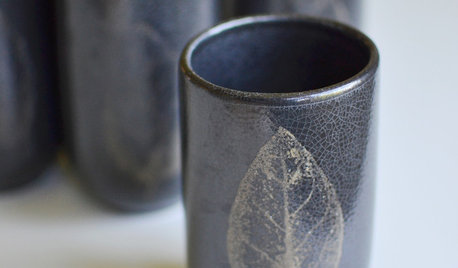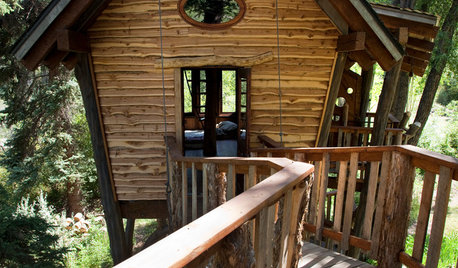Compost tumbler questions
organic_wonderful
13 years ago
Related Stories

GARDENING GUIDESGet on a Composting Kick (Hello, Free Fertilizer!)
Quit shelling out for pricey substitutes that aren’t even as good. Here’s how to give your soil the best while lightening your trash load
Full Story
CRAFTSSilk-Screen a Tumbler for a Singular Designer Look
Turn a cheap thrift store piece into a rich-looking, personalized decor accessory in this unbelievably easy DIY project
Full Story
GARDENING GUIDESNo-Regret Plants: 5 Questions Smart Shoppers Ask
Quit wasting money and time at the garden center. This checklist will ensure that the plants you're eyeing will stick around in your yard
Full Story
KITCHEN DESIGN9 Questions to Ask When Planning a Kitchen Pantry
Avoid blunders and get the storage space and layout you need by asking these questions before you begin
Full Story
ORGANIZINGPre-Storage Checklist: 10 Questions to Ask Yourself Before You Store
Wait, stop. Do you really need to keep that item you’re about to put into storage?
Full Story
GARDENING GUIDESHouzz TV: Make a Worm Bin for Rich Soil and Happy Plants
A worm-powered compost bin that can fit under a sink turns food scraps into a powerful amendment for your garden. Here’s how to make one
Full Story
TREE HOUSESTour a Fantastical Tree House for Kids and Adults Too
For an architect and a master woodworker, a magical tree house answers the question, ‘What would you do if you could do anything?’
Full Story
DECORATING GUIDESSo Your Style Is: French Country
With an artful balance between earthy and chic, French country style infuses a home with incomparable warmth and welcome
Full Story
DECORATING GUIDESSo Your Style Is: Traditional
Smitten with classic home design? Use this primer to bring the best of the traditional look to your house
Full Story
PETSSo You Want to Get a Cat
If you're a cat lover, the joys outweigh any other issue. If you haven't lived with one yet, here are a few things to know
Full StoryMore Discussions








connie_cola
Lloyd
Related Professionals
Windham Landscape Architects & Landscape Designers · Birmingham Landscape Architects & Landscape Designers · Richmond Heights Landscape Architects & Landscape Designers · Surprise Landscape Contractors · Wakefield Landscape Contractors · Bedford Heights Landscape Contractors · East Hanover Landscape Contractors · Edinburg Landscape Contractors · Eureka Landscape Contractors · Fishers Landscape Contractors · Hoffman Estates Landscape Contractors · Roseville Landscape Contractors · West Chicago Landscape Contractors · Batavia Decks, Patios & Outdoor Enclosures · San Diego Decks, Patios & Outdoor Enclosuresorganic_wonderfulOriginal Author
organic_wonderfulOriginal Author
Lloyd